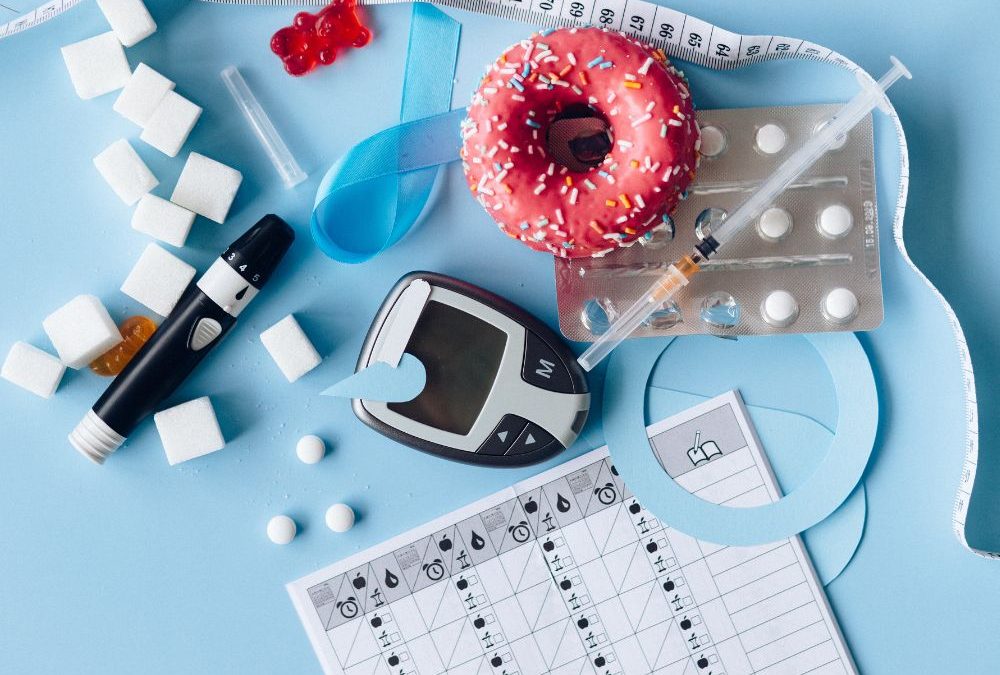Exercise and Diabetes: Managing Your Health Through Physical Activity
Exercise and diabetes are two terms that often go hand in hand when it comes to managing this chronic condition. Diabetes, a disease characterized by high blood sugar levels, can be challenging to control, but regular physical activity can play a pivotal role in its management. In this blog post, we’ll explore the relationship between exercise and diabetes, the benefits of incorporating exercise into your diabetes management plan, and practical tips to get started. Let’s dive in!
Understanding Exercise and Diabetes
Before we delve into the role of exercise, it’s essential to understand diabetes. There are two main types of diabetes:
- Type 1 Diabetes: This type of diabetes is an autoimmune condition where the body’s immune system attacks and destroys the insulin-producing beta cells in the pancreas. People with type 1 diabetes require insulin injections or an insulin pump to manage their blood sugar levels.
- Type 2 Diabetes: Type 2 diabetes is more common and is often associated with lifestyle factors such as obesity, physical inactivity, and poor diet. In this type, the body either does not use insulin effectively (insulin resistance) or does not produce enough insulin to regulate blood sugar levels properly.
Both types of diabetes can lead to serious health complications if not managed effectively, including heart disease, kidney problems, nerve damage, and vision issues.
The Role of Exercise and Diabetes Management
Regular exercise can be a game-changer for people with diabetes. Here’s how exercise positively influences blood sugar control and overall health:
- Improved Insulin Sensitivity: Exercise helps the body become more responsive to insulin, making it easier for cells to take up glucose from the bloodstream. This increased sensitivity can help lower blood sugar levels.
- Weight Management: Maintaining a healthy weight is crucial for managing type 2 diabetes. Exercise can aid in weight loss or weight maintenance by burning calories and improving metabolism.
- Lowering Blood Sugar Levels: Physical activity can directly reduce blood sugar levels, especially after meals. This effect is particularly beneficial for people with type 2 diabetes.
- Enhanced Cardiovascular Health: Diabetes is a significant risk factor for heart disease. Exercise can help lower blood pressure, improve cholesterol levels, and strengthen the heart and blood vessels.
- Stress Reduction: Managing stress is essential for people with diabetes, as stress can lead to elevated blood sugar levels. Exercise can be a great stress reliever, promoting emotional well-being.
- Muscle Building: Building lean muscle through resistance training can contribute to better blood sugar control and an increase in overall metabolism.
- Better Sleep: Quality sleep is vital for diabetes management. Regular exercise can improve sleep patterns, leading to better blood sugar regulation.
- Long-term Complication Prevention: By managing blood sugar levels effectively through exercise and other lifestyle modifications, individuals with diabetes can reduce the risk of long-term complications.
Choosing the Right Type of Exercise
When incorporating exercise into your diabetes management plan, it’s crucial to choose activities that suit your preferences and fitness level. Here are some options to consider:
- Aerobic Exercise: Activities like walking, jogging, swimming, and cycling are excellent choices for improving cardiovascular fitness and overall health. Aim for at least 150 minutes of moderate-intensity aerobic exercise per week.
- Strength Training: Resistance or strength training exercises, such as weightlifting or bodyweight exercises, can help build muscle and improve insulin sensitivity. Include these exercises in your routine at least two days a week.
- Flexibility and Balance: Yoga and stretching exercises can enhance flexibility and balance, which is essential for overall fitness and injury prevention.
- Interval Training: High-intensity interval training (HIIT) involves short bursts of intense exercise followed by brief recovery periods. HIIT can be an efficient way to improve fitness and blood sugar control.
- Sports and Recreation: Engaging in sports or recreational activities you enjoy can make exercise more enjoyable and sustainable. This could include tennis, dancing, or playing team sports.
Tips for Exercising Safely with Diabetes
While exercise is incredibly beneficial for diabetes management, it’s essential to take precautions to exercise safely. Here are some tips:
- Consult Your Healthcare Provider: Before starting any new exercise program, especially if you have underlying health conditions, consult your healthcare provider. They can provide guidance based on your specific needs and medical history.
- Monitor Blood Sugar Levels: Check your blood sugar levels before, during, and after exercise to ensure they are within your target range. This helps you understand how your body responds to different types and durations of exercise.
- Stay Hydrated: Dehydration can affect blood sugar control. Drink plenty of water before, during, and after exercise, especially in hot weather.
- Carry Snacks: Keep a source of fast-acting carbohydrates (e.g., glucose tablets or juice) with you during exercise in case your blood sugar levels drop too low.
- Wear Appropriate Footwear: Proper footwear can help prevent foot problems, which are more common in people with diabetes. Check your feet regularly for any signs of injury or infection.
- Gradual Progression: Start slowly and gradually increase the intensity and duration of your workouts. This approach reduces the risk of injury and allows your body to adapt to the changes.
- Consider Time of Day: Some people with diabetes may find it easier to exercise at specific times of the day when their blood sugar levels are more stable. Experiment to find what works best for you.
- Listen to Your Body: If you experience symptoms like dizziness, weakness, extreme fatigue, or confusion during exercise, stop immediately and seek medical attention if needed.
- Inform Others: If you’re exercising alone, let someone know your plans and expected return time. Carry identification that indicates you have diabetes.
Conclusion
Exercise and diabetes are a dynamic duo when it comes to managing this chronic condition. Regular physical activity offers a multitude of benefits, from improving insulin sensitivity to enhancing overall cardiovascular health. By incorporating exercise into your diabetes management plan and following safety guidelines, you can take significant steps towards achieving better blood sugar control and overall well-being.
Remember that diabetes management is a holistic approach that includes not only exercise but also a balanced diet, medication (if prescribed), and regular monitoring. Always consult with your healthcare provider to create a personalized diabetes management plan that suits your unique needs.
Sources:
- American Diabetes Association. (n.d.). Exercise and Type 2 Diabetes. Retrieved from https://www.diabetes.org/fitness/get-and-stay-fit/getting-started-safely/exercise-and-type-2-diabetes
- Mayo Clinic. (2022, March 23). Exercise and Diabetes: How to Get Started. Retrieved from https://www.mayoclinic.org/diseases-conditions/diabetes/in-depth/diabetes-and-exercise/art-20045697
- National Institute of Diabetes and Digestive and Kidney Diseases. (2021, November). Diabetes Diet, Eating, & Physical Activity. Retrieved from https://www.niddk.nih.gov/health-information/diabetes/overview/diet-eating-physical-activity
- Diabetes Canada. (2022). Physical Activity and Diabetes. Retrieved from https://www.diabetes.ca/managing-my-diabetes/tools—resources/exercise-and-blood-sugar/physical-activity-and-diabetes
(Note: Hyperlinks to the sources provided open in new windows.)











